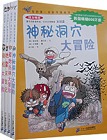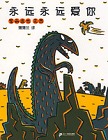3B归纳部分 Unit 1 My school bag练习试题
3B归纳部分 Unit 1 My school bag
□一.情景对话(能认识,能听懂,知道含义并熟练背诵)
1. A: Come here, Wang Bing. 过来,王兵。
What’s that on the desk? 在书桌上的那个是什么?
B: It’s a tape. 它是一个修正带。
2. A: What’s this in your pencil box? 在你铅笔盒里的是什么?
B:It’s a pencil sharpener. 它是一个卷笔刀。
3. A:Excuse me, Wang Bing. 打扰一下,王兵。
What’s this in English? 这个用英语怎么说?
B: It’s a knife. 它是一把小刀。
A: Thank you. 谢谢。
4. A: What’s that in English? 那个用英语怎么说?
B: It’s a crayon. 它是一支蜡笔。
A: Oh, I see. 哦,我明白了。
□二.单词 (能认识,能听懂,会说,知道含义并能默写)
a knife 一把小刀 a tape 一个修正带
a crayon 一支蜡笔 a stapler 一个订书机
a storybook 一本故事书 a copybook 一本抄写本
a school bag 一个书包 a toy train 一辆玩具火车
□三.词组(能认识,能听懂,会说,知道含义)
come here 过来 in your pencil box 在你的铅笔盒里
excuse me 打扰了 in English 用英语 I see 我明白了
□四.主要句型 (能认识,能听懂,知道含义,并能就划线部分进行替换)
*1. What’s this / that on / in ... ? It’s a ...
例1:A:What’s this on the chair? 在椅子上的这个是什么?
B:It’s a storybook. 它是一本故事书。
例2:A:What’s that on the desk? 在书桌上的那个是什么?
B:It’s a pencil sharpener. 它是一个卷笔刀。
例3:A:What’s this in your pencil case? 在你的笔袋里的这个是什么?
B:It’s a crayon. 它是一支蜡笔。
例4:A:What’s that in his school bag? 在他的书包里的那个是什么?
B:It’s a copybook. 它是一本抄写本。
*2.What’s this / that in English? It’s a ...
例1:Awhat’s this in English? 这个用英语怎么说?
B:It’s a stapler. 它是一个订书机。
例2:A:What’s that in English? 那个用英语怎么说?
B:It’s a toy train. 它是一辆玩具火车。
□五.歌曲表演 A B C song! (给你的家人献上你的英文歌曲吧!)
3B归纳部分 Unit 2 Yes or no
□一.情景对话(能认识,能听懂,知道含义并熟练背诵)
1. A: May I come in? 我可以进来吗?
B: Come in, please. 请进。
2. A: Gao Shan, is this a telephone? 高山,这是一部电话吗?
B:Yes, it is. 是的,它是。
A:What a nice telephone! 多漂亮的一部电话啊!
3. A:Is that a radio? 那是一个录音机吗?
B:No, it isn’t. It’s a camera. 不,它不是。它是一台照相机。
4. A: Can I have a look? 我可以看一看吗?
B:Sure. Here you are. 当然可以。给你。
□二.单词 (能认识,能听懂,会说,知道含义并能默写)
a key 一把钥匙 a clock 一个钟
a watch 一只手表 a computer 一台电脑
a radio 一个录音机 a camera 一个照相机
□三.词组(能认识,能听懂,会说,知道含义)
come in 进来 a nice telephone 一部漂亮的电话
have a look 看一看 your key 你的钥匙
his clock 他的钟 my watch 我的手表
on the TV 在电视机上
□四.主要句型 (能认识,能听懂,知道含义,并能就划线部分进行替换)
*1. Is this / that...? Yes, it is. / No, it isn’t. It’s ... What a nice / pretty...!
Can I have a look? Sure.
例1:A:Is this your camera? 这是你的照相机吗?
B:Yes, it is. 是的,它是。
A:What a nice camera! 多么漂亮的一部照相机啊!
Can I have a look? 我可以看一看吗?
B:Sure . 当然可以。
例2:A: Is that her skirt? 那是她的短裙吗?
B:No, it isn’t. 不,它不是。
例3:A: Is that your computer? 那是你的电脑吗?
B:Yes, it is . 是的,它是。
A:What a nice computer! 多么漂亮的一台电脑啊!
例4:A:Is this his radio? 这是他的录音机吗?
B:No, it isn’t. 不,它不是。
*2. Is it a ...? Yes, it is. / No, it isn’t.
例1: A:Is it a watch? 它是一只手表吗?
B:Yes, it is. / No, it isn’t. 是的,它是。/ 不,它不是。
3B归纳部分 Unit 3 Family members
□一.情景对话(能认识,能听懂,知道含义并熟练背诵)
1. A: Look, this is my family photo. 看,这是我的全家福。
B: Is this your father? 这是你的爸爸吗?
A:Yes, he is. 是的,他是。
2. A:This is your mother, I think. 我认为这是你的妈妈。
B:No, she isn’t. She’s my aunt, Mrs Black.不,她不是。她是我的阿姨,布莱克夫人。
3. A:Hi, Yang Ling. 你好,杨玲。
B:Hi, Mike.Who’s he? 你好,迈克。他是谁?
A:He’s my grandfather. 他是我的爷爷(外公)。
4. A: She’s your grandmother, I think. 我认为她是你的奶奶(外婆)。
B:Yes, she is. 是的,她是。
□二.单词 (能认识,能听懂,会说,知道含义并能默写)
a boy 一个男孩 a girl 一个女孩
a man 一位男士 a friend 一个朋友
grandfather 爷爷;外公 grandmother 奶奶;外婆
father 父亲 mother 母亲
aunt 阿姨 uncle 叔叔
brother 哥哥;弟弟 sister 姐姐;妹妹
daughter 女儿 son 儿子
□三.词组(能认识,能听懂,会说,知道含义)
my family photo 我的全家福 your father 你的爸爸
your mother 你的妈妈 I think 我认为
your grandmother 你的奶奶(外婆)
□四.主要句型 (能认识,能听懂,知道含义,并能就划线部分进行替换)
*1. Is he / she your ...? Yes, he / she is. / No, he / she isn’t. Who’s he / she?
He’s / She’s my ... Nice to meet you. Nice to meet you, too.
例1:A:Is he your father? 他是你的父亲吗?
B: Yes,he is. He’s my father. 是的,他是。他是我的父亲。
A: Nice to meet you. 见到你很高兴。
C: Nice to meet you, too. 见到你也很高兴。
例2:A: Who’s she? 她是谁?
B:She’s my daughter, Nancy. 她是我的女儿,南希。
例3:A: Who’s he ? 他是谁?
B:He’s my uncle, Mr Black. 他是我的叔叔,布莱克先生。
例4:A: Is she your sister? 她是你的妹妹吗?
B:No, she isn’t. 不,她不是。
She’s my friend, Helen. 她是我的朋友,海伦。
3B归纳部分 Unit 4 Time
□一.情景对话(能认识,能听懂,知道含义并熟练背诵)
1. A: What’s the time, Su Yang? 几点了,苏阳?
B: It’s seven o’clock. 七点整。
Let’s go to school now. 让我们现在去学校吧。
A: All right. 好的。
2. A: What’s the time, please? 请问几点了?
B: It’s twelve. It’s time to have lunch. 十二点。是吃午饭的时间了。
3. A: What’s the time? 几点了?
B: It’s four. 四点。
A: You can go home now. 你现在可以回家了。
B: OK, Miss Li. 好的,李老师。
4. A: What’s the time now, Su Hai? 现在几点了,苏海?
B: It’s eight. Shall we watch TV? 八点。我们看电视好吗?
A: Great. 太好了。
□二.单词 (能认识,能听懂,会说,知道含义并能默写)
one 一 two二 three三
four四 five五 six六
seven七 eight八 nine九
ten十 eleven十一 twelve 十二
□三.词组(能认识,能听懂,会说,知道含义)
go to school 去上学 all right 好的
have lunch 吃午饭 go home 回家
watch TV 看电视
□四.主要句型 (能认识,能听懂,知道含义,并能就划线部分进行替换)
询问时间的几种方法与回答,建议与应答。
问:What’s the time? 几点了?
What’s the time now? 现在几点了?
What’s the time , please? 请问几点了?
What’s the time , Yang Ling?几点了, 杨玲?
答:It’s seven. / It’ seven o’clock. 七点。/ 七点整。
建议:It’s time to go to school. / Time to go to school.是上学的时间了。
Shall we go to school? 我们去上学好吗?
答:OK. / All right. / Good. / Great! 好的。 / 太好了!
Let’s go. 我们走吧。
Unit5 Plus and minus
□一.情景对话(能认识,能听懂,知道含义并熟练背诵)
1. What’s ten plus five? 十加五等于多少?
It’s fifteen. 等于十五。
That’s right. 正确。
2. What’s seven plus thirteen? 七加十三等于多少?
It’s nineteen. 等于十九。
Sorry. You’re wrong. It’s twenty. 对不起。你错了。等于二十。
3. What’s twenty minus twelve? 二十减十二等于多少?
It’s eight. 等于八。
That’s right. 正确。
4. What’s eighteen minus four? 十八减四等于多少?
It’s sixteen. 等于十六。
Oh, no. It’s fourteen. 哦,不。等于十四。
□二.单词:(能认识,能听懂,会说,知道含义并能默写)
thirteen十三 fourteen十四 fifteen十五 sixteen十六 seventeen十七 eighteen十八 nineteen十九 twenty二十 plus加 minus减
wrong错误的 right正确的 see 看见 number数字
□三.词组(能认识,能听懂,会说,知道含义)
ten plus five 十加五 twenty minus twelve 二十减十二 how many 多少 I can see 我能看见 seventeen rubbers 十七块橡皮 nineteen keys 十九把钥匙 fourteen peaches十四只桃子 eighteen pencils十八支铅笔
thirteen oranges十三个橘子 twenty books 二十本书 three cars三辆小汽车 two buses 两辆公共汽车
two bikes两辆自行车 three birds三只鸟
□四.主要句型 (能认识,能听懂,知道含义)
1.What’s … plus…? ……加……等于多少?
2.That’s right. 那是对的。
3.Sorry. You’re wrong. 对不起。你答错了。
4.What’s …minus…? ……减……等于多少?
5.Oh, no. It’s…. 哦,不。等于……
6. How many pencils can you see? 你能看到多少支铅笔?
I can see eighteen pencils. 我能看到十八支铅笔。
□五.四会单词:
car小汽车 bus公共汽车 bike自行车
Unit7 Where?
□一.情景对话(能认识,能听懂,知道含义并熟练背诵)
A: I can’t find Mum. Where’s she? 我找不到妈妈,她在哪里?
B: She’s in the kitchen. 她在厨房里。
A: Where’s the cake, Mum? 妈妈,蛋糕在哪里?
C: It’s in the fridge. 它在冰箱里。
A: Mum, I can’t find Dad. Where’s he? 妈妈,我找不到爸爸了。他在哪里?
C: He’s in the study. 他在书房里。
A: Excuse me, Dad. Where’s the camera? 打扰了,爸爸照相机在哪里?
D: Sorry, I don’t know. 对不起,我不知道。
□二.单词:(能认识,能听懂,会说,知道含义并能默写)
a dining-room餐厅 a bedroom 卧室 a study 书房
a kitchen 厨房 a bathroom浴室 a sitting-room客厅
your你的 my 我的 in在…里 on 在…上
bed 床 desk 课桌 chair椅子
□三.词组(能认识,能听懂,会说,知道含义)
can’t find找不到 in the kitchen在厨房
in the fridge 在冰箱里 in the study在书房
excuse me打扰了 your pencil box你的铅笔盒
my watch 我的手表
put the pen in the pencil box 把铅笔放在铅笔盒里
□四.主要句型 (能认识,能听懂,知道含义)
1.I can’t find Mum. Where’s she? 我找不到妈妈,她在哪里?
2.She’s in the kitchen.她在厨房里。
3.Excuse me, Dad. 打扰了,爸爸
4.Where’s the camera?照相机在哪里?
5.Sorry, I don’t know.对不起,我不知道。
6.Where’s your storybook ? 你的故事书在哪里?
7.It’s in the sitting-room.它在客厅里。
Unit 8 I’m hungry
□一.情景对话(能认识,能听懂,知道含义并熟练背诵)
A: I’m hungry, Mum. 我饿了,妈妈。
B: What would you like? A hot dog? 你想要什么?要吃一个热狗吗?
A: Sounds good. 听起来不错。
B: Here you are. 给你。
A: Thank you. 谢谢。
A: I’m thirsty, Dad. 我渴了,爸爸。
B: What about some juice? 来一些果汁怎么样呢?
A: No, I’d like a soft drink. 不,我想要一罐软饮料。
B: Here you are. 给你。
A: Thanks, Dad. 谢谢,爸爸。
□二.单词:(能认识,能听懂,会说,知道含义并能默写)
a hot dog一个热狗 a sandwich一个三明治
some bread一些面包 some rice一些米饭
a pie一个派
a soft drink一罐软饮料(单数) soft drinks软饮料(复数)
a bar of chocolate 一块巧克力 a carton of milk一盒牛奶
□三.词组(能认识,能听懂,会说,知道含义)
sounds good听起来不错 thank you谢谢你
some juice 一些果汁
□四.主要句型 (能认识,能听懂,知道含义)
I’m hungry.我饿了。 I’m thirsty.我渴了。
What would you like? A hot dog? 你想要什么?一个热狗怎么样?
No, I’d like a pie. 不我想要个馅饼。
What about some juice? 来些果汁怎么样?
Sound good.听起来不错。
Here you are.给你。
Let’s cook some rice. 让我们做饭。
Wash some rice 洗米。
Pour some water.倒水。
Turn on the cooker打开电饭煲。
Unit 9 Shopping
□一.情景对话(能认识,能听懂,知道含义并熟练背诵)
A: Can I help you? 我能帮助你吗?
B: I’d like a cap, please.我要一个帽子。
A: What colour? 什么颜色的?
B: White. 白色。
C: A vest, please.请给我一件背心。
A: What about the red one? 那件红色的怎么样?
B: Yes, it’s nice. 好的,它很漂亮。
A: Here you are.给你。
B: How much is it? 多少钱?
A: Twenty yuan, please.二十元。
C: Here you are.给你钱。
□二.单词:(能认识,能听懂,会说,知道含义并能默写)
a hat 一顶礼帽 a cap 一顶鸭舌帽
a tie 一条领带 a belt 一条皮带
shoe鞋子(单数) shoes鞋子(复数)
sock袜子(单数) socks袜子(复数)
a vest一件背心 trousers裤子复数名词)
□三.词组(能认识,能听懂,会说,知道含义)
a pair of shoes一双鞋子 a pair of socks一双袜子
it’s nice 它很漂亮
□四.主要句型 (能认识,能听懂,知道含义)
1. Can I help you? 我能帮助你吗? What would you like? 你想要什么?
I’d like a / an ..., please.我要一个......
2. What colour? 什么颜色的?
Black.黑色的。
3. What about the ... one? 那个......的怎么样?
Yes, it’s nice. 好的,它很漂亮。
4. How much is it? 多少钱?
... yuan, please. ......元。
Here you are.给你钱。
Unit 10 Do you play…?
□一.情景对话(能认识,能听懂,知道含义并熟练背诵)
A: Do you play the piano? 你弹钢琴吗?
B: No, I don’t. 不,我不弹。。
A: What do you play? 你演奏什么呢?
B: I play the violin. 我拉小提琴。
C: Mike, do you like football? 迈克,你喜欢足球吗?
D: Yes, I do. 是的,我喜欢。
C: Let’s go and play football now.让我们现在去踢足球吧。
D: Great! Let’s go. 太好了!我们走吧。
□二.单词:(能认识,能听懂,会说,知道含义并能默写)
football足球 volleyball排球
baseball棒球 basketball篮球
piano钢琴 guitar吉他
violin小提琴 accordion手风琴
□三.词组(能认识,能听懂,会说,知道含义)
play the piano 弹钢琴 play the violin 拉小提琴
play the guitar 弹吉他 play the accordion 拉手风琴
play football 踢足球 play volleyball 打排球
play baseball 打棒球 play basketball 打篮球
like football 喜欢足球 how many boys and girls多少个男孩和女孩
□四.主要句型 (能认识,能听懂,知道含义)
1. 球类运动中间没有the
A: Do you play / like football / baseball / basketball / volleyball?
你踢 / 喜欢足球 / 打棒球 / 打篮球 / 打排球吗?
B: Yes, I do. 是的,我踢 / 打 / 喜欢。No, I don’t. 不,我不踢 / 喜欢。
2. 乐器中间要有the
A: What do you play? 你演奏什么呢?
B: I play the piano / guitar / violin / accordion.
我弹钢琴 / 弹吉他 / 拉小提琴 / 拉手风琴。
Unit
□一.情景对话(能认识,能听懂,知道含义并熟练背诵)
A: Do you like swimming? 你喜欢游泳吗?
B: Yes, I do. 是的,我喜欢。
A: Let’s go swimming. 让我们去游泳吧。
B: That’s a good idea. 好主意。
C: Do you like skiing? 你喜欢滑雪吗?
D: No, I don’t. 不,我不喜欢。
C: What do you like? 你喜欢什么?
D: I like skating. 我喜欢溜冰。
C: Let’s go skating. 让我们去溜冰吧。
D: Good idea. 好主意。
□二.单词:(能认识,能听懂,会说,知道含义并能默写)
动词原型 动词的现在分词(直接加ing)
fish fishing 钓鱼
row rowing 划船
climb climbing 爬山
ski skiing 滑雪
动词原型 动词的现在分词(双写最后一个字母加ing)
swim swimming 游泳
jog jogging 慢跑
run running 跑步
动词原型 动词的现在分词(去e加ing)
skate skating 溜冰
□三.词组(能认识,能听懂,会说,知道含义)
like swimming 喜欢游泳 like running 喜欢跑步
like jogging 喜欢慢跑 go fishing 去钓鱼
go skiing 去滑雪 go rowing 去划船
go climbing 去爬山 go skating 去溜冰
a good idea 一个好主意
□四.主要句型 (能认识,能听懂,知道含义)
1.A: Do you like + 动词的现在分词(...ing) ? 你喜欢......吗?
B: Yes, I do. 是的,我喜欢。/ No, I don’t. 不,我不喜欢。
2.A: What do you like? 你喜欢什么呢?
B: I like + 动词的现在分词(...ing). 我喜欢......
3.A: Let’s go + 动词的现在分词(...ing). 让我们去......吧!
B: Good idea. / That’s a good idea. 好主意。
关键字:小学三年级英语试卷,三年级英语试卷分析,小学英语试卷
3B归纳部分 Unit 1 My school bag练习试题相关文章
- › 2012——2013学年度第一学期小学三年级英语期中练
- › 2012学年度第二学期三年级英语期中考试
- › 2012——2013学年度冀教版四年级上册英语第一单元
- › 2012——2013学年度上学期小学三年级英语期末模拟
- › 2012——2013学年度上学期小学英语期末模拟试卷三
- › 小学三年级英语检测题 2012.10
- › 2012年春小学三年级英语期中题(科普版)
- › 新课标人教版小学三年级英语(上)Unit4试卷
- › 新课标人教版小学三年级英语(上)Unit3试卷
- › 新课标人教版小学三年级英语(上)Unit2试卷
- › 新课标人教版小学三年级英语(上)Unit1试卷
- › 湘少版三年级上册英语期中试卷














